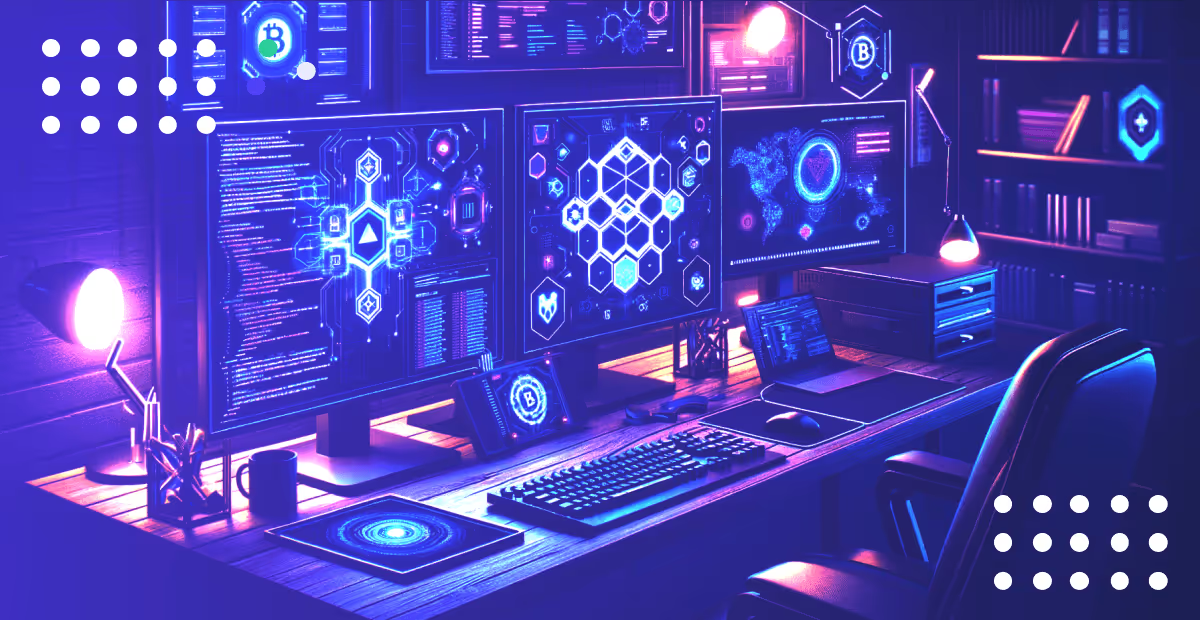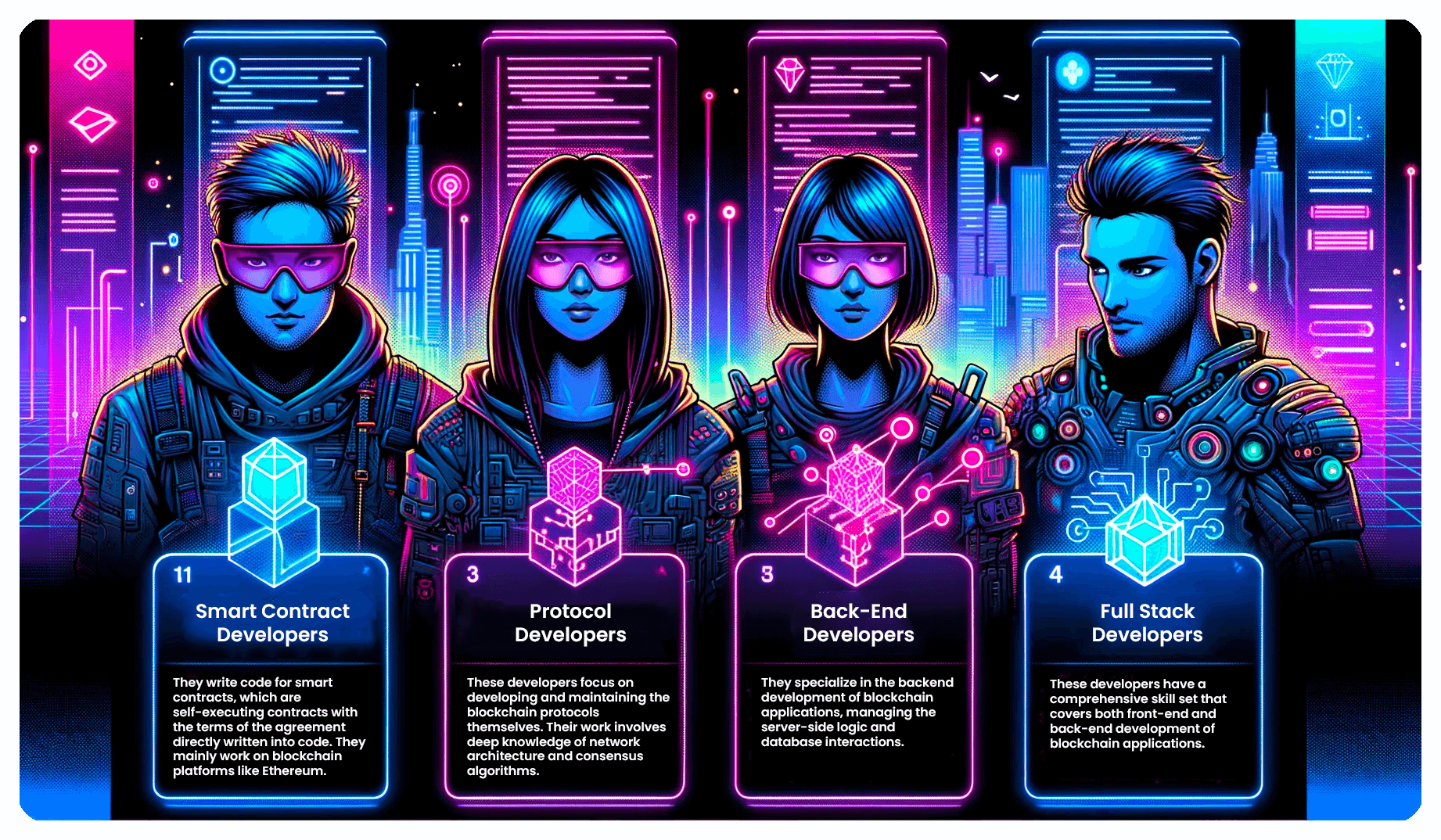Setting Up a Blockchain Development Environment: Beginner's Guide



In this blog we will read about different types of blockchain developers and help you understand the main responsibilities of the roles, finally we will also see how you can set up a blockchain development environment for the type of blockchain developer you like.
Embarking on a blockchain development journey requires an understanding of the ecosystem and the roles within it. This guide will help beginners set up their blockchain development environment, tailored to various developer roles, each with its unique requirements and tools.
Blockchain is a distributed ledger technology known for its decentralization, immutability, and transparency. It's the foundation of cryptocurrencies and is being increasingly adopted in various industries for secure and transparent data management.

Smart Contract Developers create and deploy self-executing contracts with the terms of the agreement between parties written into lines of code. They predominantly work on blockchain platforms like Ethereum.
Solidity: The primary language for Ethereum smart contract development.
Truffle Suite: A development environment for Ethereum that includes a testing framework and asset pipeline.
Ganache: Part of Truffle Suite, Ganache is a personal blockchain used for Ethereum development.
MetaMask: A browser extension that allows interaction with the Ethereum blockchain.
Protocol Developers work on the blockchain's underlying protocol. They are responsible for designing and implementing the network's architecture, consensus mechanism, and other fundamental aspects.
Programming Languages: Proficiency in Go, C++, Rust, or others, depending on the blockchain.
Blockchain Protocols Understanding: Deep knowledge of specific blockchain protocols.
IDEs: Use IDEs like IntelliJ IDEA or Visual Studio Code for coding.
BlockEnd Developers focus on the server-side of blockchain applications. They manage the interactions between the blockchain and the application's front-end.
Node.js and Express.js: For server-side application development.
Web3.js or Ethers.js: Libraries for interacting with Ethereum.
Database Management: Knowledge of databases like MongoDB or MySQL.
A Full Stack Blockchain Developer has the skills to work on both the front-end and back-end of blockchain applications. They handle everything from user interface to smart contract functionality and database management.
Front-End: React.js, Angular.
Back-End: Node.js, Express.js.
Blockchain: Solidity, Truffle Suite, Ganache.
Setting up a blockchain developer environment is a critical step for any aspiring developer in this field. Whether your focus is on smart contracts, protocol development, backend (BlockEnd), or full stack development, the right tools and knowledge are essential. Begin with a clear understanding of your role, set up your environment accordingly, and embark on your blockchain development journey with confidence.
Build blockchain apps faster with a unified framework for 60+ blockchain protocols.